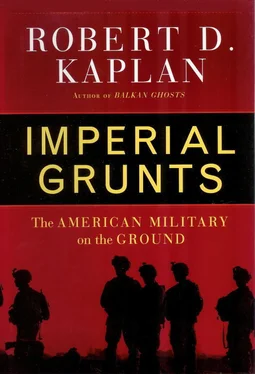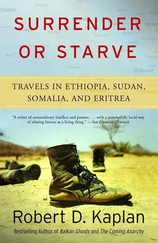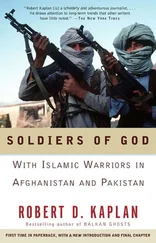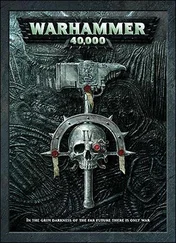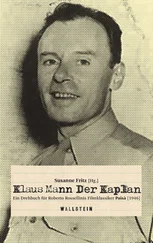The Special Forces operation in El Salvador was certainly not a complete success; nor were many aspects of the Vietnam War a failure. Moreover, the congressionally imposed limit of 55 SF trainers at any one time—a reflection of the Vietnam syndrome—was not always adhered to; in fact, the real number on the ground was often higher. Still, it was an exceedingly small number. The U.S. approach to El Salvador showed that as much help as the U.S. gives a besieged ally in a small war, ultimately, military and humanitarian assistance must operate under a reasonably strict ceiling, so that the war remains the ally’s to win or lose.
For diplomatic reasons, it was politically unacceptable for SOUTHCOM to have a forward operating base inside Colombia. Thus, it was technically a battalion headquarters and not an FOB, though that’s what everyone called it.
Douglas Porch, professor of strategy at the Naval War College, in his 1996 introduction to Col. C. E. Callwell’s Small Wars: Their Principles and Practice (1896; reprint, Lincoln: University of Nebraska Press), notes that a key feature of imperialism is the use of host country or “client” armies in place of one’s own.
According to The Economist, “The harder-jawed a region, the likelier it is to put its young into the army. The generally Republican, pro-gun south contributes a lot more soldiers than the Democratic north-east, both in absolute numbers and percentages of the regional population. A Texan is eight times more likely to be in uniform than a New Yorker.” Mar. 22, 2003, p. 28.
A. J. Simons, The Company They Keep: Life Inside the U.S. Army Special Forces (New York: Free Press, 1997), pp. 189–90. The author writes that some noncom families live in trailers and turn on the heat only at night in the winter. “Others heated with wood they chopped themselves.”
<���…>
See David Brooks’s insightful commentary about the reduced sense of self in the part of America that voted for George Bush in the 2000 election: “One Nation, Slightly Divisible,” The Atlantic Monthly, December 2001, p. 63.
“Humvee” is, in fact, another acronym: high mobility multi-wheeled vehicle.
This is one of the themes in Shultz’s The Secret War Against Hanoi .
This included my colleague at The Atlantic Monthly, Michael Kelly, who gave his life for the enterprise. Embedded with the 3rd Infantry, he was killed April 3, 2003, on the outskirts of Baghdad.
SARS, severe acute respiratory syndrome, caused panic in Asia in the spring of 2003. The Centers for Disease Control and Prevention in Atlanta said that the masks were of only minimal help, yet the Mongolian authorities insisted that everyone wear them.
The black berets were introduced by the then–Army Chief of Staff, Eric Shinseki.
As it happened, that prediction proved correct for Operation Iraqi Freedom, but not for the insurgency that followed.
The Siberian city of Chita, northeast of Mongolia, was reportedly 40 percent ethnic Chinese by 2003.
When Zinni’s term ended, he was succeeded by Army Gen. Tommy Franks.
But it must be said that Fleming was no slouch at hunting. Much of what he ate in his journey across China he had shot himself. He would die tragically in a hunting accident in Scotland at the age of sixty-four.
Marine Maj. Gen. Holland McTyeire (“Howling Mad”) Smith is the father of amphibious training of the U.S. armed forces. Before the outbreak of World War II, the Alabama-born general foresaw the need for U.S. soldiers and marines to land on enemy beaches in the face of hostile fire. See Robert Sherrod’s Tarawa: The Story of a Battle (New York: Duell, Sloan and Pearce, 1944), pp. 133–34.
The Northeast certainly has military facilities—the Hanscom Air Force Base in Portsmouth, New Hampshire; the Soldier Systems Center in Natick, Massachusetts; the U.S. Military Academy at West Point, New York; the Naval War College in Newport, Rhode Island; and so on. Nevertheless, no military facility in the Northeast serves as the home of thousands of uniformed troops and their families, and none has generated a retirement community of former military men and women, as bases in the heartland and in the South have.
Defense Secretary Donald Rumsfeld considered this imbalance irrelevant, arguing that troops everywhere belonged to him and the President, to be moved around as they saw fit. But outside Washington, the proprietary attitude with which the various area commands referred to their troops was striking. Also, Rumsfeld’s argument presupposed a powerful defense secretary as well as a president focused constantly on military matters. As the 1990s showed, a less forceful defense secretary coupled with a distracted president allowed some area commanders to become barons in their own theaters.
Though the Korean Peninsula was technically under its own separate command from PACOM, it was the centerpiece of any regional strategy.
It was also testament to the fact that under Spanish rule, administration of the Philippines was often subcontracted out to Mexicans.
In fact, a Chinese shipping company held the contract for operating the ports at both ends of the Panama Canal.
Foreign Minister Ople died a few months after I met him.
SEALs: Sea, Air, and Land, the Navy’s equivalent of Delta Force. SAS: Special Air Service, an elite commando team.
Ramón Magsaysay was the Philippine minister of national defense and later the country’s president. In the early 1950s, helped by an American covert action program, he mounted a successful counterinsurgency campaign against the communist Huk guerrillas in Luzon.
The Philippine Armed Forces later tracked al-Ghozi down and killed him.
The comparison between extremist Islam and the granite-like ideology of Soviet communism was made by Bernard-Henri Levy in Who Killed Daniel Pearl? (Hoboken, NJ: Melville House, 2003).
The Rapid Deployment Joint Task Force was specifically promoted by President Carter’s hawkish national security advisor, Zbigniew Brzezinski. See Michael R. Gordon and Gen. Bernard E. Trainor, The Generals’ War: The Inside Story of the Conflict in the Gulf (Boston: Little, Brown, 1995), p. 43.
William Cohen later served as the secretary of defense in the second administration of President Bill Clinton.
In 2003 it was $5 billion out of a total defense budget of $364.7 billion, or 1.8 percent. About one third of that $5 billion was for salaries.
A burka is a loose-fitting, all-enveloping cloak with veiled eye slits that devout Muslim women wear in Afghanistan and Pakistan.
Close air support, during Operation Enduring Freedom in the fall of 2001, involved the much more high-tech AC-130 Spectre gunships, which were converted cargo planes.
Читать дальше
